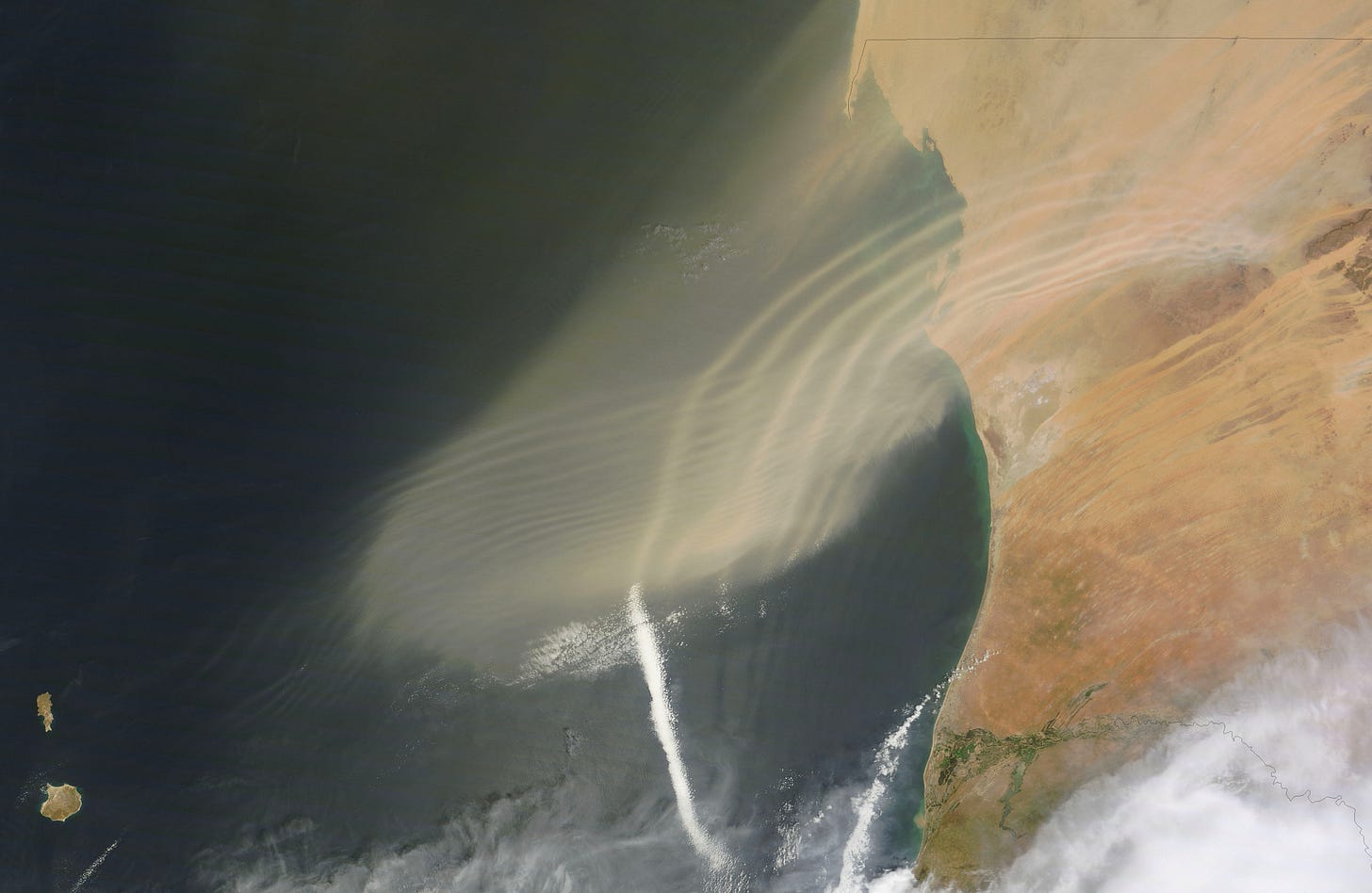What do air and water have in common?
The ocean demands most of our attention when we're surfing, but considering half our bodies are exposed to the air above it, we should spend some time focusing on that too. Both the atmosphere and ocean follow remarkably similar rules when it comes to wave behavior and flow dynamics.
Both air and water are fluids, which means they flow and deform continuously under applied forces rather than maintaining a rigid shape like solids do. The Navier-Stokes equations that describe fluid motion work identically whether you're modeling water flowing around your surfboard or air moving over a wave face.
The most obvious differences between these fluids are their composition and density. Water is about 800 times denser than air at sea level, which creates the sharp boundary we call the ocean surface. But this composition and thus density difference doesn't change the underlying laws, it just changes the scale and timing of how those physics play out.

To see this, let’s consider how both systems respond to temperature changes. In the ocean, warmer water sits above cooler water (called stratification), creating layers of different density that allow internal waves to propagate beneath the surface. The atmosphere works the same way, with warmer air rising above cooler air masses, creating the density stratification that supports atmospheric waves. Both environments can develop stable layering that waves travel through, even though we can't always see the atmospheric versions.
Turbulence provides another clear example of shared behavior. Whether you're watching foam swirl in a wave's aftermath or observing clouds break apart in the sky, both are subject to chaotic motion. The Reynolds number, which determines whether flow remains smooth or becomes chaotic, works identically in air and water. High Reynolds numbers mean turbulent flow in both cases - it's just that achieving those numbers requires different speeds and scales in each medium.
Just as water flow slows down near the bottom due to friction, air flow slows near any solid boundary. It even slows down near the surface of the water, which is why wind measurements are often standardized to a height above the boundary. The mathematics describing these velocity gradients are identical, which is why engineers can test airplane wings in water tunnels and get meaningful results about air flow.

Both systems also support waves that propagate through their internal structure rather than just at their boundaries. Ocean internal waves travel along temperature and salinity boundaries deep underwater, while atmospheric internal waves move along temperature boundaries in the sky. These waves can be massive with some ocean internal waves spanning over 100 meters tall and atmospheric waves bounded by the height of the atmosphere.
The coupling between these two fluid systems, or how they interact in other terms, becomes apparent when you consider how they exchange energy and momentum. Wind stress transfers energy from air to water, generating the surface waves we ride. But the reverse happens too, with evaporation and heating transfer energy from ocean to atmosphere, driving weather patterns. Both fluids are constantly influencing each other because they're part of the same larger system.
Understanding that air and water are both fluids helps explain why oceanographers and meteorologists often work together. The temperature differences that create your morning offshore winds are part of the same thermal dynamics driving cloud formation. The pressure systems generating storm surf also control atmospheric circulation patterns. Beneath the obvious differences in what we can see and feel, it appears that air and water are really just different expressions of the same underlying physics.
Further Reading:

